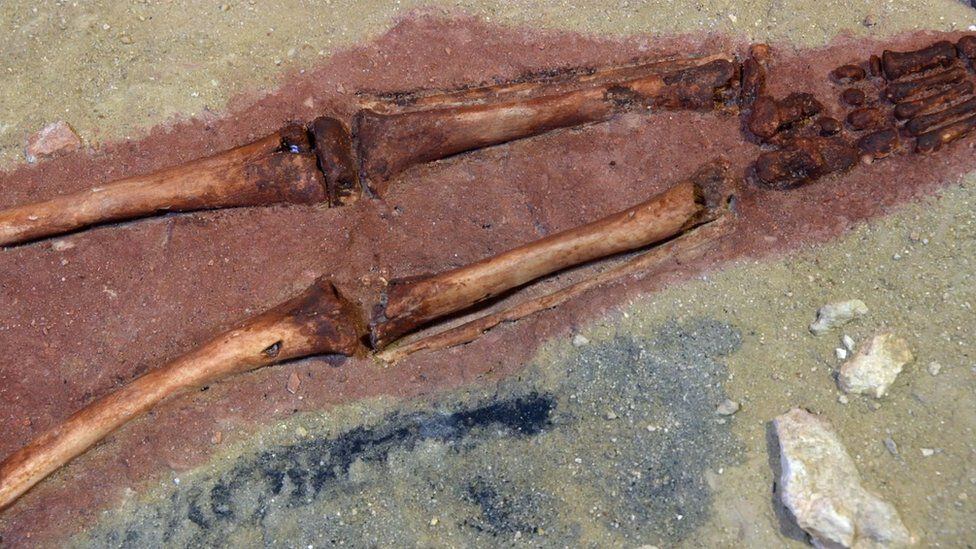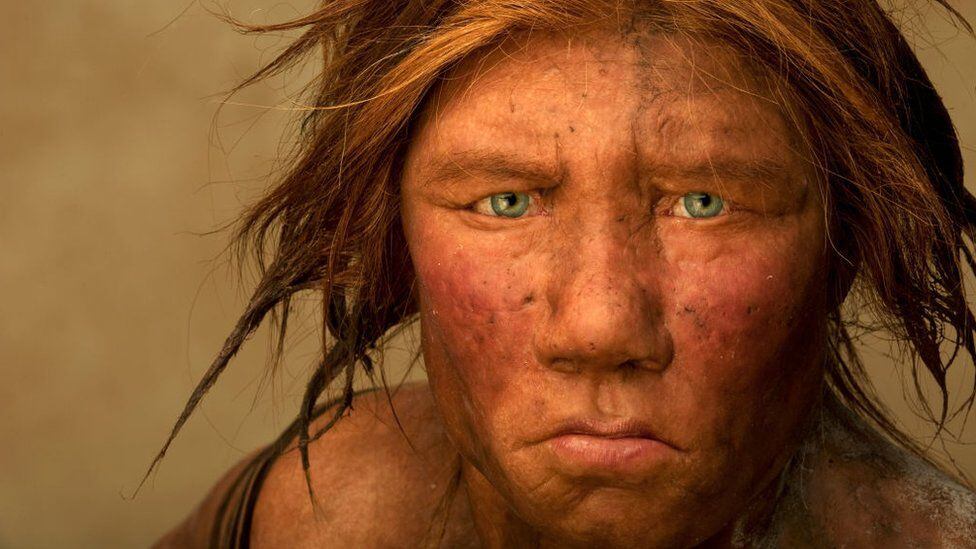In Lagar Velho, in the valley of Lapedo, about 150 km from Lisbon, the skeleton of the batatized as the child of Lapedo was discovered in 1998.
About 4 years old, he had been buried at this site in Portugal a few 29,000 years.
Look: More than 30 tourists were rescued after a shipwreck in the Portuguese Algarve
Something strange about her body caught the attention of archaeologists who began excavating the site.
“There was something strange about the child’s anatomy. When we found the jaw, we knew it was going to be a modern human, but when we exposed the complete skeleton (…) we saw that it had the body proportions of a Neanderthal,” he explained to the BBC João Zilhão, archaeologist and leader of the team that worked on the find.
“The only thing that could explain this combination of traits, was that the boy was, in fact, evidence that Neanderthals and modern humans interbred“, Add.
If we go back to what was thought about the evolution of humans in the late 1990s – when it was assumed that Neanderthals and modern humans were different species and therefore interbreeding was unthinkable – it is not surprising that the vast majority of experts believed that the interpretation of Zilhão and his team was somewhat far-fetched.
But his theory led to a revolution in evolutionary studies.
nearly intact skeleton
The community to which the child belonged was hunter-gathererand of nature nomadic.
As archaeologist Ana Cristina Araújo explained to BBC Reel, when the boy died, the group dug a hole in the ground, burned a pine branch and deposited his body wrapped in an ocher-dyed shroud on top of the ashes.
“We don’t know (for sure) if it was a boy or a girl, but there are indications that it was a boy.”
Regarding the cause of death, the archaeologist says that there are no clues that point to a disease or a fall. Therefore, it is possible to imagine a diversity of scenarios.
“The boy could have eaten a poisonous mushroom, or he could have drowned.”
His body remained buried for millennia until, in 1998, it was discovered by chance and with its skeleton almost intact when the owners of the land began to excavate to build a series of terraced structures.
Hypothesis
After it was transferred to the National Museum in Lisbon, they began to study it in detail.

“The leg bones were shorter than normal for a child his age. How could the legs look like a Neanderthal? Some teeth also looked like a Neanderthal, while others looked like a modern human. How do you explain this? ?” Zilhão wondered.
The researchers handled two hypotheses. One was that the child was the result of a one-time cross between a Neanderthal and a modern human.
Zilhão, however, was not convinced by this. If this was a single, rare, sporadic event, the possibility of finding this single event 30,000 years later was almost impossible.
The second hypothesis suggested that Neanderthals and sapiens had regular sexual relations with each other.

“We knew that in the Iberian Peninsula the moment of contact (between the two) was (…) about 37,000 years ago. If the skeleton belonged to that time, the first theory could work. But if the child was from a much older period late, the implications had to be that we were looking at a population-level process, not a causal encounter between two individuals,” says Zilhão.
The radiocarbon dating resolved the question: the child of Lapedo was 29,000 years old.
“If so many millennia after the moment of contact people living in this part of the world still showed anatomical evidence of this ancestral population of Neanderthals, it had to be because interbreeding not only happened once, but was the norm“said the archaeologist.
The strength of the evidence found by the team in Portugal meant that other experts had to seriously consider this hypothesis.
Changes
Thanks to this discovery, there was a change in our understanding of Neanderthals as species.

Research shows that Neanderthals they are not a different species. “We have overinterpreted minor differences in the facial skeleton or in the robustness of the skeleton,” says Zilhão.
Other fossil discoveries made later with characteristics similar to those of the Lapedo child gave further weight to the interbreeding theory, which was later bolstered when researchers sequenced the entire Neanderthal genome.
This is how we know that it is possible for Europeans and Asians to have up to 4% Neanderthal DNA.
“That’s not to say that in each of us that 2% or 4% is the same. In fact, if you put together all the parts of the Neanderthal genome that still persist, that’s almost 50% or 70% of what was specifically Neanderthal. So the Neanderthal genome has persisted almost in its entirety,” explains the researcher.
This knowledge “enriches our understanding of human evolution,” says Zilhão, rather than “thinking that we only descended from a very small population that lived somewhere in Africa 250,000 years ago and that all the rest of the people who lived in that time just disappeared.
Source: Elcomercio
I am Jack Morton and I work in 24 News Recorder. I mostly cover world news and I have also authored 24 news recorder. I find this work highly interesting and it allows me to keep up with current events happening around the world.

:quality(75)/cloudfront-us-east-1.images.arcpublishing.com/elcomercio/GE2TCNJNGAZS2MRVKQYDAORRGU.jpg)

:quality(75)/cloudfront-us-east-1.images.arcpublishing.com/elcomercio/FLNG4LKWINF3POY2UYWN5ZB3SI.jpg)
:quality(75)/cloudfront-us-east-1.images.arcpublishing.com/elcomercio/WALJ6KER2VGHTFHGUQWVRCZR7A.jpg)
:quality(75)/cloudfront-us-east-1.images.arcpublishing.com/elcomercio/PNHCCWBID5HAZEHDRKZP2P5RWI.jpg)

